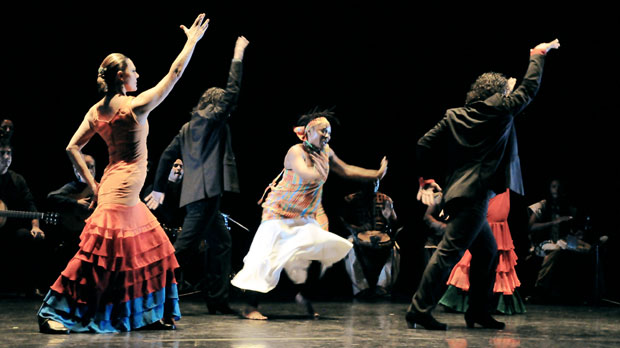
© Cesar Alocer. (Click image for larger version)
Paco Pena Flamenco Dance Company
Quimeras
London, Sadler’s Wells
27 November 2012
www.pacopena.com
www.sadlerswells.com
The wedding is over: drunken couples are propping each other up on the dance floor but the DJ has gone. A man of a certain age – perhaps he’s the uncle of the bride – with unfashionably long grey hair, wearing a pair of equally unfashionable, yet comfortable, slacks (the kind you might see advertised in the back of the Daily Mail) – pulls up a chair in the darkened hall and starts to strum at a guitar. There you have an image of the scene that begins Quimeras, but this 70 year-old is Paco Peña and the music that flows from his fingers and thumbs is the best traditional Flamenco guitar that you are ever likely to hear. He conjures up a whole orchestra of sound. Although I had the Rioja (albeit in a plastic cup), the pity was that we were listening to Peña’s magical music at Sadler’s Wells and not on the patio of a restaurant on the outskirts of Córdoba with the scent of bougainvillea hovering in the late evening sky. In some respects, it was also a pity when the dancing broke the spell.
Not that the dancing isn’t often also wonderful. The four flamenco dancers are experienced world-class performers, dancing with that strange mix of severity and softness, rigidity and fluency that is peculiar to their art. The long, unkempt curly hair of the male bailaores (Ángel Muñoz and Cristóbal García) gives them the superficial air and arrogance of poolside barmen in Benidorm but they dance with the elegance and pride of princes; the women (Carmen Ríos and Charo Espino, who is married to Muñoz) can be spell-binding in their precision, power and sexuality. A flowing solo by the inscrutable Espino, dancing with a shawl, was especially notable. The percussive energy of the African dances (from Senegal and Guinea) is infectious and the show’s first act develops into a dance-off between the styles, punctuated with songs and music from both traditions. Delia Membrive’s flamenco singing and the unstoppable ball of energy in the human form of Guinean, Marisa Camara (who both sang and danced), gave a gritty glue to gel the group together. The whole performance could have fallen into a bitty, cabaret feel but the direction – by South Bank Director, Jude Kelly (who must be on any long list to succeed Tony Hall at the Royal Opera House) – ensured that the pace and the interest levels never faltered while switching focus between music and dance and stylistically traversing the continents on a regular basis. It was slick and well-presented without any frills.
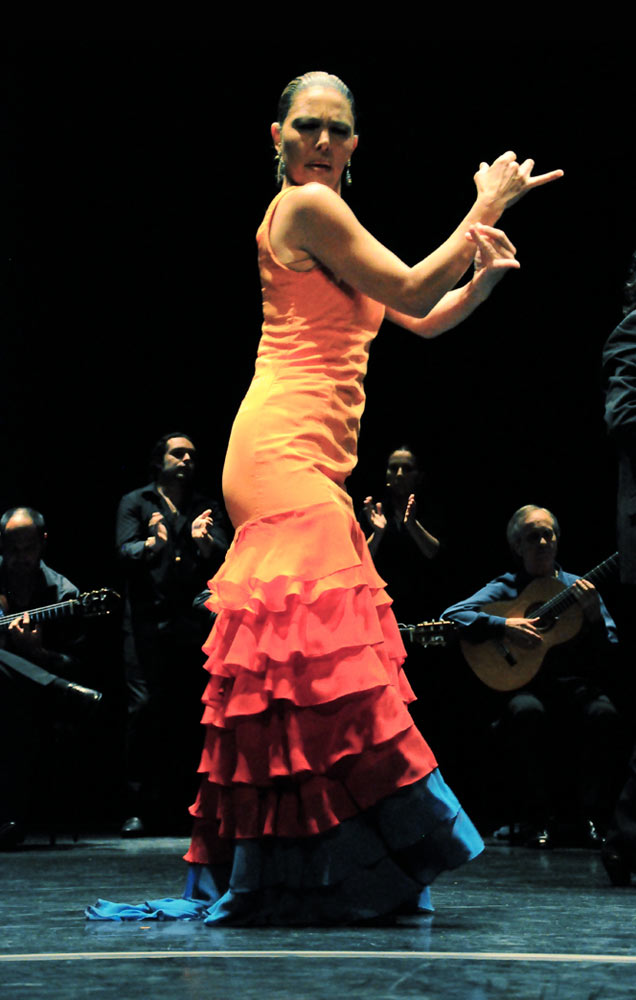
© Cesar Alocer. (Click image for larger version)
The concept of Quimeras concerns the evolutionary tide of humanity that has crossed over the Mediterranean Sea from Africa into Spain. Peña is illuminating the plight of modern-day Africans but this is a cyclical issue that must also address the roots of Flamenco culture that has coagulated in southern Spain – since the eighteenth century – as a fusion of many diverse influences including those that had emigrated north from Africa. Extracts of moving text being read in voiceovers told of the sufferings of modern-day Africans risking the journey across the sea and there is a cold, confrontational scene to symbolise the African refugees being met by Spanish officials.
One might view the whole show as a battle of flamenco and African styles: the one, refined, disciplined and exact; the other wild and free; but both sharing a total dependence on rhythm. In one memorable sequence the African immigrants have apparently found employment as waiters in a flamenco restaurant, hovering at the edges in white shirts and bowties while the festival of tanguillos, alegrias and sevillanas takes place: but gradually, the Africans are drawn in to the dance and when the two cultures merge it becomes surprisingly difficult to see the join. This is the simple truth of the exercise and a political point made very plainly and succinctly, without narrative, by that old, grey man who sure plays a mean guitar.














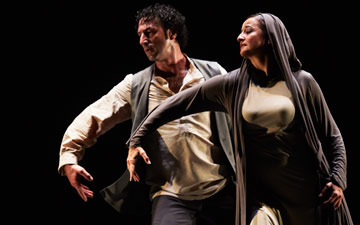
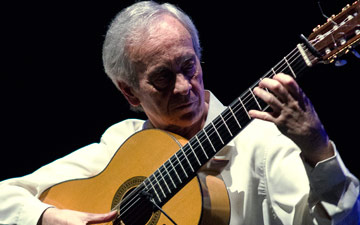
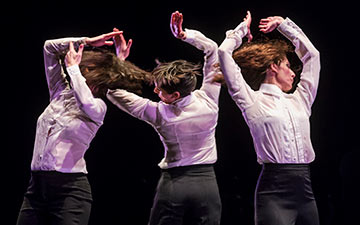
You must be logged in to post a comment.